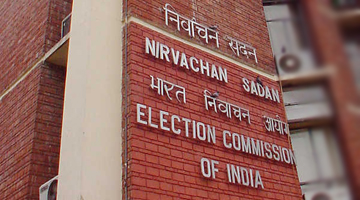Rule 6 (3) of CCR, 2004 - A pricier option?
MAY 03, 2016
By CA Pritam Mahure
 NOT. No. 23/2016-CE (NT) dated 1 April 2016 amended Rule 6 of the CENVAT credit Rules, 2004 as under:
NOT. No. 23/2016-CE (NT) dated 1 April 2016 amended Rule 6 of the CENVAT credit Rules, 2004 as under:
(i) pay an amount equal to six per cent. of value of the exempted goods and seven per cent. of value of the exempted services subject to a maximum of the sum total of opening balance of the credit of input and input services available at the beginning of the period to which the payment relates and the credit of input and input services taken during that period; or;
(ii) pay an amount as determined under sub-rule (3A):
In this regard, it may be observed that there are two options available to the taxpayers:
a. Option I - Pay 6% or 7% (subject to opening balance plus cenvat credit taken on inputs and input services)
b. Option II - Proportionate credit
Now, the question is, under Option I,
a. Whether the maximum amount of reversal referred under Rule 6 (3) (i) of CCR is for CENVAT credit balance 'after' utilization or 'before' utilisation? Or to put it differently, does the Service Provider/Manufacturer have an option to first utilize the credit taken during the period against the payment of duties/service tax for taxable goods and services and then adjust the remaining credit for the payment of tax-free goods and services?
b. If the balance credit is the balance 'before' utilization i.e. before adjusting duties/service tax for taxable goods and services then will it lead to a scenario where, practically, this Option I will be non-available to most of the taxpayers?
Lets decipher.
It may be noted that the maximum amount specified under option (i) is sum total of:
- Opening balance available at the beginning of the period plus
- Credit of input and input services taken during that period
The term referred is 'taken'. The meaning of the term 'taken' can be construed as 'availed' as its been used interchangeably with 'availed' at various places in CENVAT Credit Rules, 2004 (refer Rule 9, Rule 14 etc.).
Thus, the maximum utilisable amount would be opening balance plus credit availed. This credit availed would be the credit taken (i.e. before utilisation). Also, the terminology is 'taken during that period'. Thus, it appears that the Rule is referring to the credit taken 'during that period'. It is pertinent to note that whenever the legislators wanted to refer to the net CENVAT credit balance after utilisation then they have specifically mentioned so in CCR (refer Rule 11 (2) 'after deducting the said amount from the balance, if any, lying in his credit, the balance, if any, still remaining...', Rule 11 (3) etc).
Given the aforesaid, the reversal would be restricted to opening balance plus credit availed (before utilisation).
However, this interpretation leads to anomaly and in most of the situations it leads to a scenario wherein the Option I will not be useful to most taxpayers. This is discussed by way of an example* (refer note below the table) as under:
Let's assume opening balance as 'Nil'
|
Particulars
|
Amount (Rs)
|
|
Taxable (1)
|
90
|
80
|
70
|
60
|
50
|
40
|
30
|
20
|
10
|
|
Exempt (2)
|
10
|
20
|
30
|
40
|
50
|
60
|
70
|
80
|
90
|
|
Op. balance (3)
|
Nil
|
Nil
|
Nil
|
Nil
|
Nil
|
Nil
|
Nil
|
Nil
|
Nil
|
|
CENVAT credit taken during the month(4)
|
4.20
|
4.20
|
4.20
|
4.20
|
4.20
|
4.20
|
4.20
|
4.20
|
4.20
|
|
Reversal @ 7% of exempt services (5=2*7%)
|
0.70
|
1.40
|
2.10
|
2.80
|
3.50
|
4.20
|
4.90
|
5.60
|
6.30
|
|
Reversal restricted to total credit (6=3+4)
|
-
|
-
|
-
|
-
|
-
|
4.20
|
4.20
|
4.20
|
4.20
|
|
Credit balance available 'after' utilization (7=4-6)
|
3.50
|
2.80
|
2.10
|
1.40
|
0.70
|
Nil
|
Nil
|
Nil
|
Nil
|
*Note: In the aforesaid example, the credit of 4.20 is arrived after considering 30% (of total turnover) as expenses attracting service tax @ 14% (i.e. 30 x 14% = 4.20). In cases, where this ratio of 30% is further lower [say an entity using agricultural produce, which do not attract any excise duty] then the credit amount would go down and the Option I will literally become non-existent for most taxpayers.
It may be noted that when choice of Options is given then it should be comparable and choosing an option (over another) should not lead to disadvantage. For example, if someone says you have 2 options, take Rs 0 or take Rs 10, the first option appears unreasonable. In most of the cases (refer table above) the Option I will lead to CENVAT Credit availability being 'Nil'. Thus, when there is no "real" option available under Rule 6 to a taxpayer he will be compelled choose Option II.
Now, what if there is an opening balance?
Let's assume there is opening balance of say April 2016. So, can this opening balance be utilized first for payment of monthly (April 2016) service tax liability of output services and then the balance left should be considered for reversal? Herein, one view that appears to emanate is that opening balance, being a validly available CENVAT credit balance, can be utilized first for payment of monthly service tax liability. However, as the aforesaid provisions states that the opening balance should be considered for reversal, the Authorities taking an alternate view cannot be ruled out.
Additional challenges
Further, if we compare the Option I (payment of 6% or 7%) then it can be observed that inherently Option I is disadvantageous (as compared to Option II i.e. proportionate credit) as under:
a. Entire credit could be reversed under Option I (instead in Option II only common credit is to be reversed)
b. Even opening balance is considered for reversal under Option I
Thus, it appears that the taxpayers would prefer opting for Option II, as in most cases Option I may not be beneficial.
Given the aforesaid, will the Board be kind enough to examine and clarify the issue and if necessary make suitable amendments so that the inherent discrimination between the two choices on offer is avoided?
|
(DISCLAIMER : The views expressed are strictly of the author and Taxindiaonline.com doesn't necessarily subscribe to the same. Taxindiaonline.com Pvt. Ltd. is not responsible or liable for any loss or damage caused to anyone due to any interpretation, error, omission in the articles being hosted on the sites)
|









 NOT. No.
NOT. No. 





